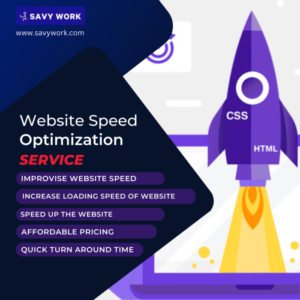
Social networking trends for businesses are evolving at a rapid pace, reshaping how companies connect with their audiences. In today’s digital landscape, understanding these trends is essential for any business aiming to thrive and engage effectively with its target market.
From the power of user-generated content to the strategic use of influencer marketing, businesses have a myriad of tools at their disposal. By tapping into these trends, companies can enhance their visibility, foster deeper connections, and ultimately drive growth.
Current Social Networking Trends in Business

Social networking is evolving rapidly, and businesses are keen to adapt to these changes to stay competitive. The latest trends are shaping how companies interact with customers, promote their products, and build brand loyalty. Understanding these trends is essential for businesses looking to leverage social media as a powerful tool for growth and engagement.The emergence of new technologies and consumer behaviors is driving significant changes in social networking platforms, impacting how businesses operate.
Brands are focusing on creating meaningful connections with their audience through innovative strategies. A key aspect of this evolution is the increasing significance of user-generated content (UGC), which has become a vital component in authenticating brand messaging and enhancing customer engagement.
User-Generated Content in Social Networking Platforms
User-generated content is reshaping the way businesses approach their marketing strategies on social platforms. UGC refers to any content—such as images, videos, reviews, or blog posts—created by consumers rather than brands. This shift towards authenticity allows consumers to feel more connected to brands, thus fostering trust and loyalty. Businesses can greatly benefit from UGC by incorporating it into their marketing campaigns.
Here are some reasons why UGC is essential:
- Authenticity: UGC provides an unfiltered view of the brand from the customer’s perspective, enhancing credibility.
- Cost-Effective: Brands can save on production costs by utilizing content created by their customers.
- Engagement: Encouraging customers to share their experiences increases interaction and engagement on social media.
- Community Building: UGC fosters a sense of community among consumers, creating a loyal customer base.
Integrating UGC within marketing strategies can significantly amplify a brand’s reach and foster vibrant community interactions.
Influencer Marketing in Social Networks
Influencer marketing continues to gain traction as businesses recognize the impact of social media influencers on consumer behavior. Collaborating with influencers allows brands to tap into existing communities of followers, who often trust the influencer’s recommendations. This trend is not just about partnering with celebrities; micro-influencers, who have smaller but highly engaged audiences, are proving to be effective advocates for brands.
Here are some pivotal considerations for businesses looking to leverage influencer marketing:
- Targeted Reach: Influencers typically cater to specific niches, helping brands reach their target demographic effectively.
- Engagement Rates: Influencers often have higher engagement rates compared to traditional advertising, translating to better ROI.
- Content Creation: Influencers excel in creating relatable and engaging content that resonates with their audience.
- Brand Authenticity: Partnering with trusted influencers adds credibility to brand messaging and can humanize the brand.
As brands navigate the influencer landscape, selecting the right partners and maintaining authenticity are crucial for successful campaigns.
Strategies for Effective Social Media Engagement

To build a strong online presence, businesses must prioritize effective engagement strategies on social media platforms. Engaging with the audience not only fosters a sense of community but also enhances brand loyalty and visibility. Here, we’ll explore methods to boost audience interaction through interactive content, highlight successful social media campaigns, and discuss the benefits of live streaming for brand enhancement.
Methods for Increasing Audience Engagement through Interactive Content
Interactive content is pivotal in capturing the attention of social media users and encouraging them to participate actively. Businesses can create engaging experiences that draw users in, leading to higher interaction rates. Key methods include:
- Quizzes and Polls: Tools like Instagram Stories or Facebook Polls allow businesses to ask quick questions, providing valuable insights while making the audience feel involved.
- Contests and Giveaways: Organizing contests where users share content or vote for their favorite entries can significantly boost engagement. For example, a brand could ask users to post photos featuring its products, incentivizing participation with prizes.
- Interactive Videos: Videos that allow users to choose their path or make decisions (like choose-your-own-adventure formats) keep viewers engaged and encourage them to share their experiences.
- User-Generated Content: Encouraging fans to create content related to the brand not only enhances engagement but also builds trust. Highlighting this content on the brand’s page makes users feel valued.
Successful Social Media Campaigns and Their Strategies
Many brands have launched successful campaigns that effectively utilized engagement strategies. Here are a few notable examples:
- ALS Ice Bucket Challenge: This viral campaign encouraged individuals to pour ice water over themselves and challenge others. By using a simple yet impactful idea, they generated massive visibility and engagement while raising awareness for ALS.
- Coca-Cola’s Share a Coke: By personalizing bottles with names, Coca-Cola encouraged customers to share their experiences on social media. This campaign led to increased engagement as people would post images of their personalized bottles.
- Netflix’s #NetflixAndChill: This campaign capitalized on a popular phrase, inviting users to share their favorite shows or moments. The relatable content sparked conversations, leading to a significant increase in interactions.
- GoPro’s User Videos: GoPro showcases user-generated videos, inspiring customers to share their adventures. This type of content not only engages the audience but also serves as authentic testimonials for the brand.
Utilizing Live Streaming to Enhance Brand Presence
Live streaming has emerged as a powerful tool for brands to connect with their audience in real-time. It creates a sense of urgency and intimacy that pre-recorded content often lacks. Effective techniques for leveraging live streaming include:
- Behind-the-Scenes Tours: Offering a glimpse into daily operations or events can humanize a brand and foster a closer connection with the audience.
- Live Q&A Sessions: Hosting sessions where audiences can ask questions directly enhances transparency and engagement, allowing brands to address inquiries in real-time.
- Product Launches: Live streaming new product releases can create excitement and anticipation. Brands like Apple and Nike have effectively used live events to showcase new products.
- Collaborations with Influencers: Partnering with influencers to host live sessions can widen reach and draw in followers from different audiences, enhancing brand visibility.
Integrating Social Networking with Marketing Techniques
In the fast-paced business landscape, effectively integrating social networking into marketing strategies is crucial for enhancing brand visibility and driving engagement. By leveraging social media platforms, businesses can create a seamless connection between their marketing efforts and audience interactions, leading to improved customer relationships and increased conversion rates. This integration requires a thoughtful approach that aligns social media with broader marketing objectives.
Incorporating Social Media into Search Engine Marketing
Integrating social media with search engine marketing (SEM) can significantly boost a brand’s online presence. Social signals, like shares and likes, can enhance search engine rankings and drive organic traffic. Here are key strategies to achieve this integration:
- Utilize -rich content in social media posts that align with SEM campaigns, improving visibility on both social platforms and search engines.
- Share high-quality, relevant content from your website on social channels to drive traffic and improve backlink profiles, which are crucial for .
- Engage with audiences on social platforms by responding to comments and participating in discussions, fostering a more interactive environment that can lead to higher engagement metrics.
Effective integration of social media into SEM not only enhances visibility but also facilitates better engagement with target audiences.
The Role of Social Bookmarking in Enhancing Online Visibility
Social bookmarking plays an essential role in increasing a brand’s online visibility and driving traffic to websites. By sharing links to valuable content, businesses can amplify their reach and enhance discoverability. Below are the benefits of social bookmarking:
- Improves by generating backlinks, which can elevate a website’s ranking in search results.
- Increases referral traffic by directing users from bookmarking sites to your content, thus expanding audience reach.
- Facilitates content discovery as users often browse social bookmarking sites to find relevant and trending information.
Social bookmarking is a powerful tool for businesses looking to enhance their online presence through strategic content sharing.
Relationship Between Social Media and Web Design for User Engagement
The interaction between social media and web design is vital for creating engaging user experiences. A well-designed website that incorporates social media elements can significantly enhance user engagement. Here’s how to establish this relationship effectively:
- Incorporate social media buttons prominently on your website, encouraging visitors to share content seamlessly, which can lead to increased visibility.
- Ensure that your website is mobile-responsive, as a significant amount of social media traffic comes from mobile devices, enhancing user accessibility.
- Utilize social proof, such as testimonials and user-generated content, in web design to build trust and encourage visitors to engage further with your brand.
Integrating social media features into web design not only enhances user experience but also encourages deeper engagement with the brand.
Wrap-Up
In summary, embracing the latest social networking trends offers businesses a unique opportunity to engage their audience and stay ahead in a competitive marketplace. By leveraging user-generated content, influencer partnerships, and innovative engagement strategies, companies can build a compelling online presence that resonates with their customers.
FAQs
What are the key benefits of using social networking for businesses?
Social networking allows businesses to reach a wider audience, enhance customer engagement, and build brand loyalty through interactive content and community building.
How can businesses effectively measure their social media success?
Success can be measured through key performance indicators (KPIs) such as engagement rates, follower growth, conversion rates, and overall return on investment (ROI) from campaigns.
What types of content are most engaging on social media?
Visual content, such as videos and infographics, along with interactive posts like polls and quizzes, tends to drive higher engagement rates on social platforms.
How often should businesses post on social media?
While posting frequency can vary by platform, a consistent schedule of 3-5 times a week is often recommended to keep the audience engaged without overwhelming them.
What role does social listening play in social networking?
Social listening helps businesses understand customer sentiments, track brand mentions, and identify trends, allowing them to respond proactively to their audience’s needs.






